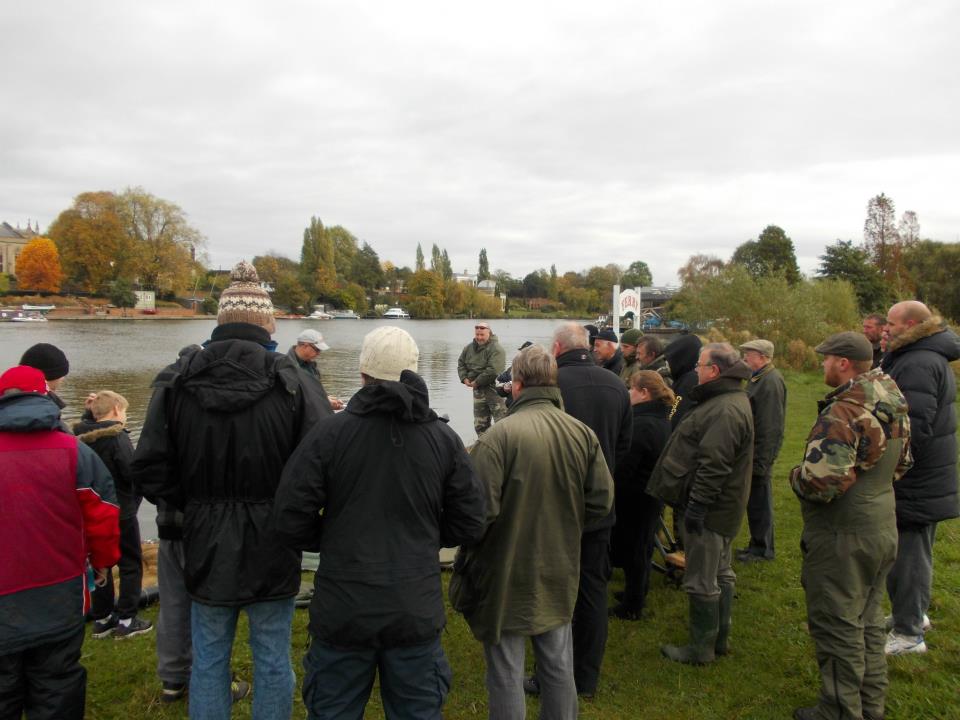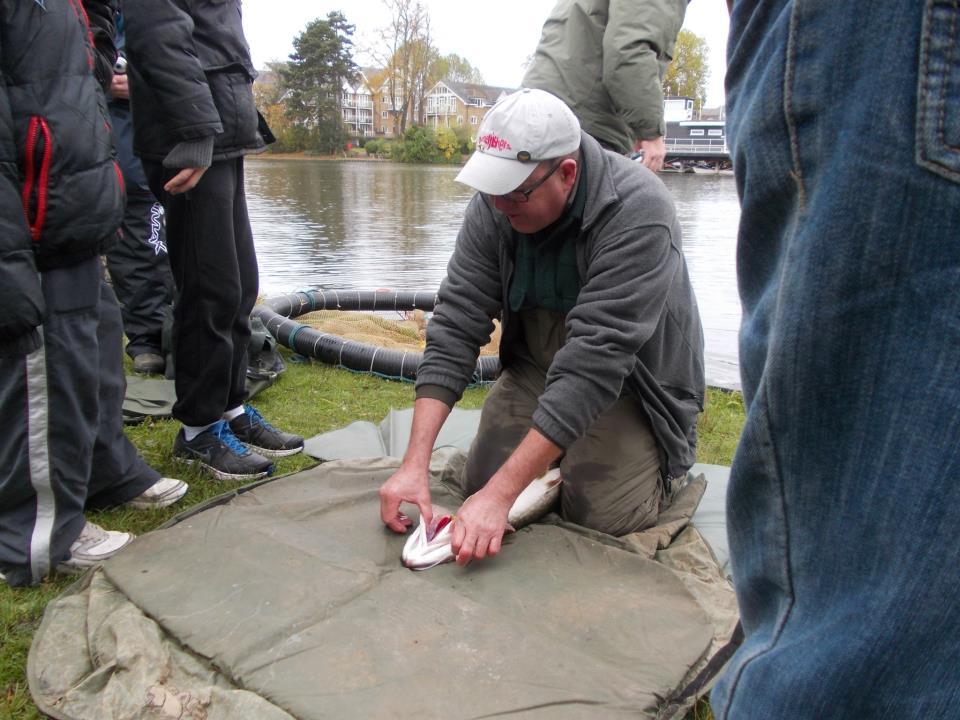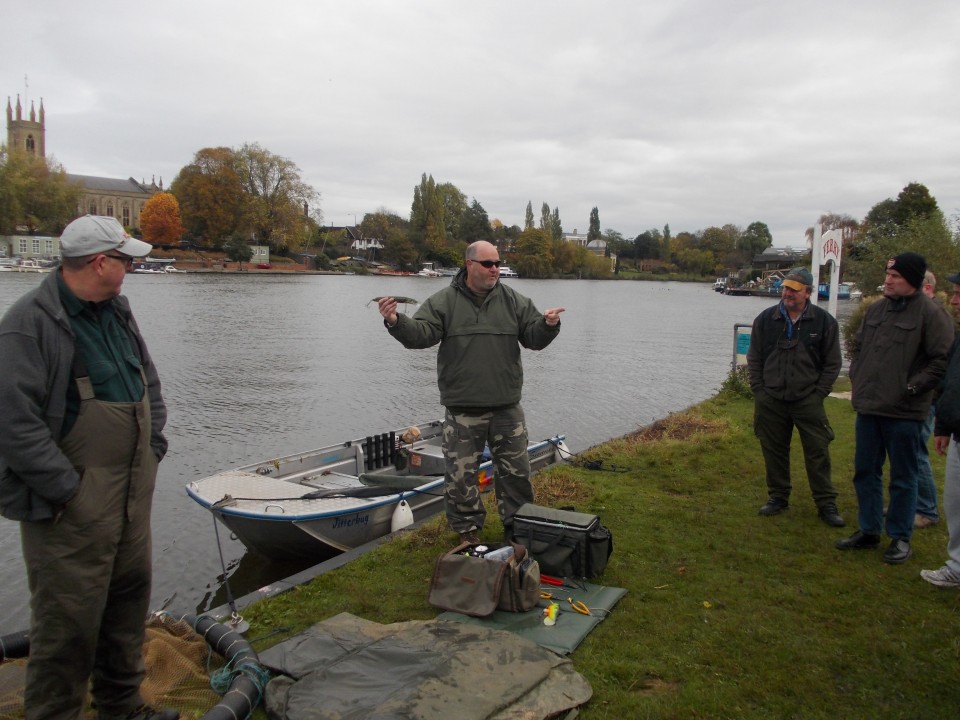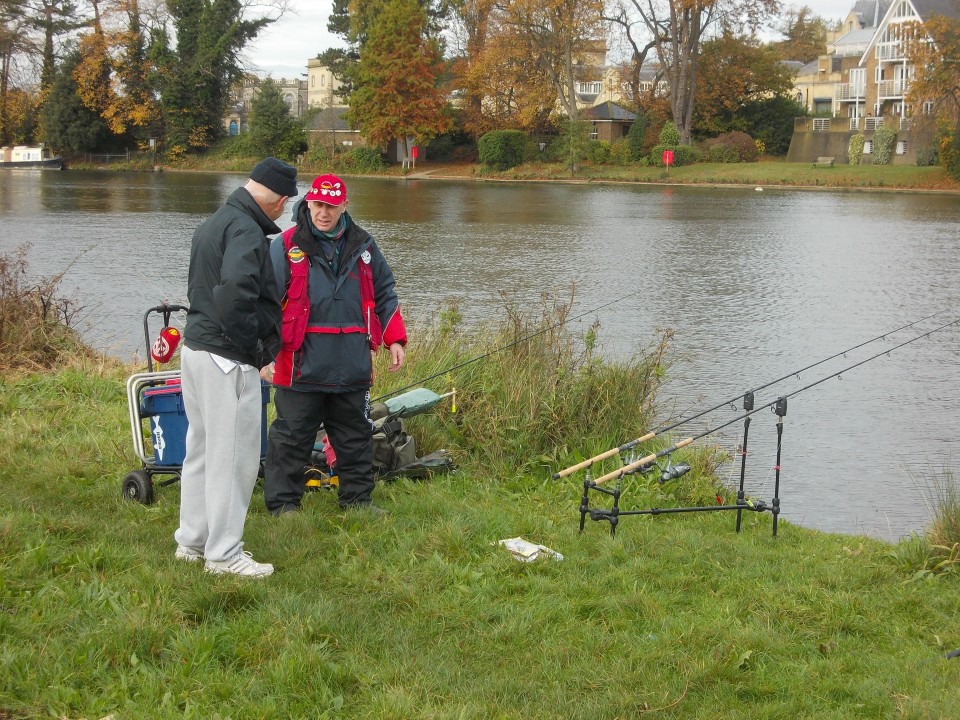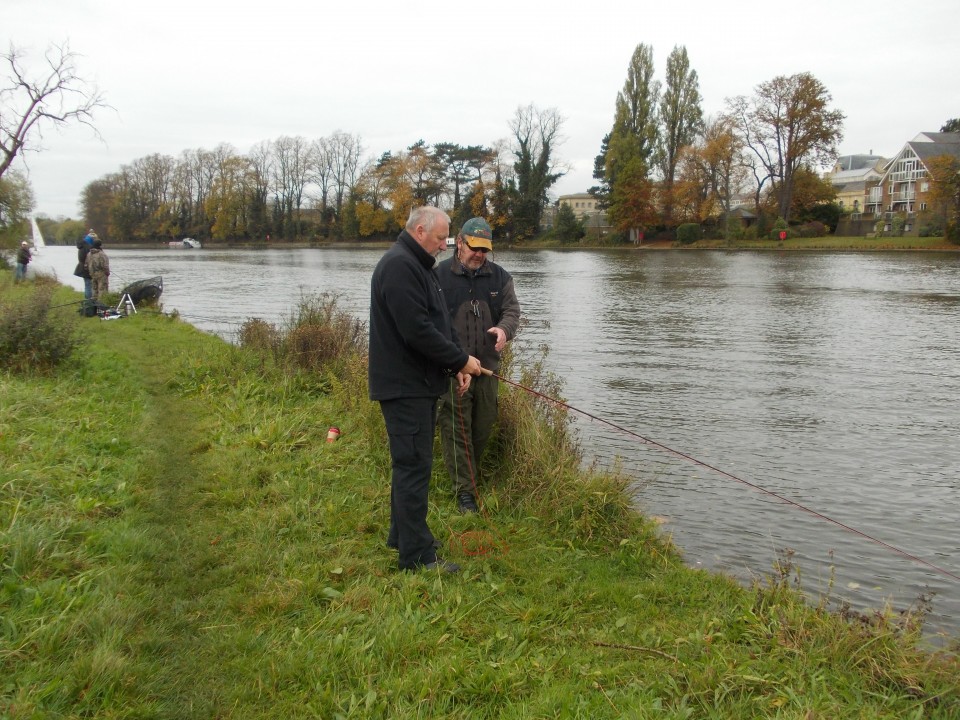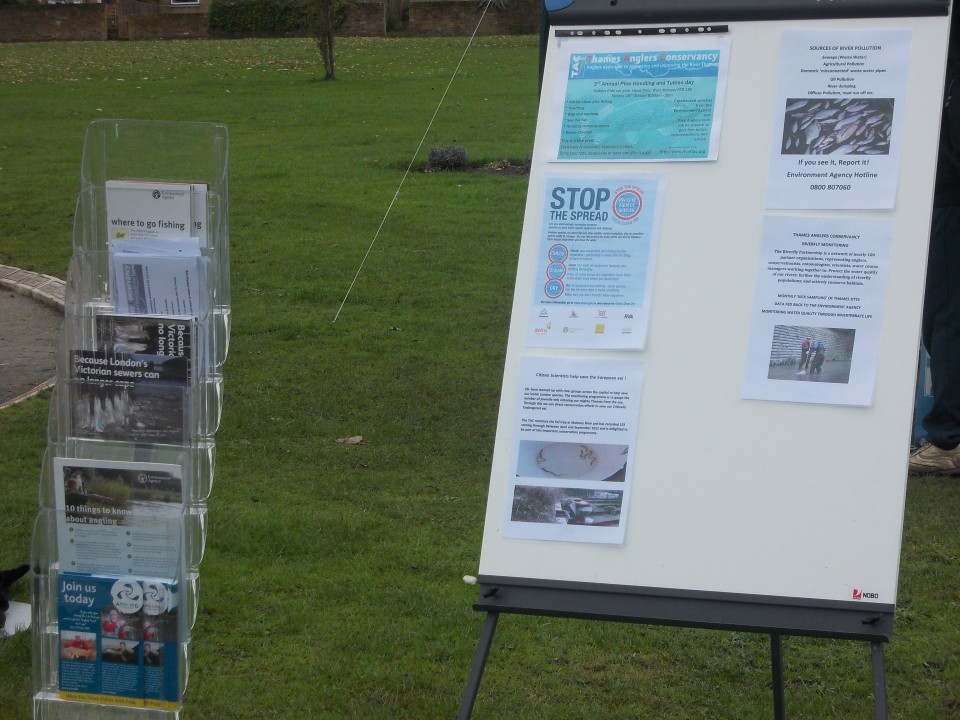-
- Buy a UK rod licence: EA Link
- 0800 807060 EA Hotline, Pollution, Poaching
- Thames Region River Levels
- Thames River Conditions
- Thames Temps and Clarity
- Thames Fishing Byelaws
- Thames Annual Tidefest
- Thames Record List
- Thames Eel Monitoring
- EA Annual Fisheries Report
- EA Flood Warnings
- Thames Sewage Discharge Notifications
- Thames Sewage Events
- Thames Tideway Tunnel
- River Thames Scheme: Reducing flood risk from Datchet to Teddington
- Martin Salter: Fighting for Fishing Blog
- Duncan Charmans World of Angling Blog
- Angling Trust
- Water and sewerage companies in England: environmental performance report 2013 – 2016
- EA Pollution incidents: 2014 evidence summary
- EA Pollution incidents: 2015 evidence summary
- River Crane and DNR Fisheries Impact assessment
- Links
Recent Tweets
Error retrieving tweetsNews Archive
‘End of the River’ – A new video highlighting the damage caused by small Hydropower
Posted in News
Tagged Hydropower
Comments Off on ‘End of the River’ – A new video highlighting the damage caused by small Hydropower
Thames Anglers get coaching at Free Annual Pike day
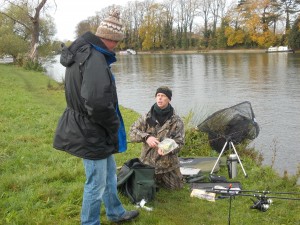 The Thames Anglers Conservancy 3rd annual Free Thames Pike day proved a great success with anglers of all ages learning about fish care and the best fishing methods to use.
The Thames Anglers Conservancy 3rd annual Free Thames Pike day proved a great success with anglers of all ages learning about fish care and the best fishing methods to use.
Angling Coach Ian James
The event was held for the first time at Hurst Park Open space in Molesey and, despite the cold conditions, we had many local anglers out enjoying this free event.
Members of the Walton Pike Anglers Club along with coaches provided by the Environment Agency gave talks and demonstrations of Pike handling, tackle and the opportunity try out different styles of fishing. Along with the anglers, members of the public stopped and watched the Pike being handled which gave TAC volunteers the chance to engage with them about a range of issues that affect the river and championing the conservation side of our sport.
Neil Depledge of the Walton PAC & TAC giving a talk about fish care
Neil demonstrating how to safely handle Pike
PAC & TAC's Jeff Kennett explaining about the different types of lures
Experienced angling coach Phil Wilkinson giving advice
Angling guide and Pike on Fly expert Mark Anderson
Information and leaflets about the TAC and partners
We would like to thank all the volunteers who turned up to help and made it such a great day. Also, our thanks go to the Environment Agency West Thames fisheries team and the Elmbridge Council Parks and Recreation staff for helping us stage the event.
TAC
Angling Trust calls for urgent action on the spread of Invasive Species
 The news that the Demon shrimp (Dikerogammarus haemobaphus) has been discovered in the River Severn and is almost certain to spread to other river systems could be devastating for anglers and extremely damaging for our fisheries.
The news that the Demon shrimp (Dikerogammarus haemobaphus) has been discovered in the River Severn and is almost certain to spread to other river systems could be devastating for anglers and extremely damaging for our fisheries.
The Angling Trust is demanding that the government immediately announce the ratification of the International Maritime Organisation’s International Convention for the Control and Management of Ships' Ballast Water and Sediments. Ballast water transfer has been identified as a major pathway for invasive species to spread across the globe, threatening ecosystems as they are moved. This Convention has been ratified by countries as far away as Antigua but not by the UK.
The Trust has written to the Parliamentary Under-Secretary for Transport, Stephen Hammond MP, pointing out that further delay would be ‘negligent’. The Demon Shrimp, like the Killer Shrimp which found its way into a number of still waters last year, is a non-native species and is predatory on other insect life. It could therefore dramatically affect the availability of the main food source for most species of fish and many birds, with unknown but potentially disastrous consequences.
Angling Trust chief executive Mark Lloyd said: “This news is similar to the recent discovery of a killer fungus that could decimate ash trees in our woodlands. Put alongside the existing problems of signal crayfish and the recently arrived Killer Shrimp, it is vital that the government takes all appropriate steps to reduce threats from invasive non native species to our environment. As an island we have an advantage over other countries and we should make the most of that by cutting off the known routes by which these species can invade. An obvious one would be immediately to ratify commonsense and long overdue measures to prevent their transfer through ships’ ballast. We call on DEFRA to work up an integrated strategy to tighten up on controls on imports, and to increase public awareness and education about bio-security measures needed to stop these species from spreading further in the UK.”
Copy of letter to Parliamentary Under Secretary of State at the Department of Transport
Posted in News
Tagged Angling Trust, Invasive, killer shrimp, Non-Native
Comments Off on Angling Trust calls for urgent action on the spread of Invasive Species
New invasive shrimp found in Thames – Check, Clean and Dry
Environment Agency Stakeholder Brief: New shrimp found on Thames (31st October 2012)
The shrimp, Dikerogammarus haemobaphes, which is a relative of the ‘killer shrimp’, has been found on the River Thames between Romney lock (Windsor) and Bell Weir lock (Staines).
Photo © APEM Limited www.apemltd.co.uk
The sites are spread over a distance of approximately 10km. A programme of further investigations are underway to determine the extent of the distribution. This species was first discovered in the river Severn by APEM Ltd and now at other locations across the Midlands. Locations where it has been confirmed are the River Sowe, River Tame, River Trent near Nottingham, River Severn at Tewkesbury and at sites on the Worcester-Birmingham Canal and Staffordshire & Worcestershire Canal. While this new invasive shrimp species is related to the ‘killer shrimp’, we are uncertain at this stage what its impact might be.

Photo © APEM Limited www.apemltd.co.uk
Until we have better information we will, as a precaution, treat it as a high impact species. An immediate assessment of the risks of this shrimp has been commissioned. The shrimp originates from the Ponto-Caspian region of Eastern Europe around Black Sea, and has invaded Western Europe largely as a result of a canal link created between the Danube and the Maine, a tributary of the Rhine, in 1992. It is one of approximately 20 invasive non-native species that are currently spreading via this route.
The Environment Agency is urging all water users to help slow the spread of this invasive species by helping publicise the bio-security advice available at Check Clean and Dry. All water users should check, clean and dry all their equipment after use, before using it at another location. Boat users must be particularly careful to ensure that boats and kayaks are drained, cleaned and dried.
Boat trailers must also be thoroughly cleaned after use. Anglers should ensure that nets and other equipment are cleaned and dried thoroughly.
Posted in News
Tagged Environment Agency, Invasive, killer shrimp, Non-Native, Thames
Comments Off on New invasive shrimp found in Thames – Check, Clean and Dry
Farmer fined £15k after hundreds of fish died in pollution incident
 Hundreds of fish died when 13.5kms of river was polluted by liquid fertiliser, Grantham magistrates heard.
Hundreds of fish died when 13.5kms of river was polluted by liquid fertiliser, Grantham magistrates heard.
Robert Grindal, trading as CJ Grindal, was fined £15,000 and ordered to pay full costs of £6,761 after pleading guilty to causing the pollution, which happened when a tractor towing a bowser carrying liquid fertiliser tipped over into a ditch. The ditch at Manor Farm, North Witham, Grantham, joins a tributary of the River Witham before joining the river itself.
The court heard that approximately 6,000 litres of fertiliser was lost, causing a pollution with an environmental impact that the Environment Agency categorised as the most serious. Mrs Claire Corfield, prosecuting for the Environment Agency, said that the pollution had a devastating effect on the fish population with an estimate of over 700 brown trout killed as well as many smaller fish species. She said that on the day of the incident Grindal did not follow the advice of an Environment Agency officer who asked him to block off the receiving watercourse. Had this been done, the impact would have been significantly reduced.
Magistrates were told that emergency procedures in place on the farm at the time were inadequate. Staff were not trained on environmental risks and relied on Grindal in an emergency. However, he did not know what to do in the event of a major spill and was unaware at the time of the polluting effects of fertiliser. Mrs Corfield added that the incident also had a major impact on other people as the Grantham Angling Association had to close its waters upstream of Grantham to fishing.
After the hearing Environment Agency officer, Adam Glassford, said: “This was a very serious incident with devastating effects on the environment. The effects could have been minimised had there been proper plans in place for fertiliser spills. “Anyone who handles, stores or transports materials that could cause pollution should have procedures in place to prevent and minimise such pollution from occurring.”
Robert Grindal trading as CJ Grindal pleaded guilty to: – On or about 10 April 2012, off Stamford Road, near North Witham, Grantham, Lincolnshire, you did cause poisonous, noxious or polluting matter to enter inland freshwaters, namely a ditch connected to a tributary of the River Witham, without being authorised by an environmental permit – Contrary to Regulation 12(1)(b) and 38(1)(a) of the Environmental Permitting (England and Wales) Regulations 2010
Posted in News
Tagged Angling Trust, Fish KIll, Pollution, Sewage
Comments Off on Farmer fined £15k after hundreds of fish died in pollution incident
Severn Trent Water fined £20,000 for polluting brook with Raw Sewage
 Severn Trent Water Limited have pleaded guilty at Cheltenham Magistrates’ Court to one charge of breaching a condition of their Environmental Permit when discharging raw sewage into to a tributary of the Ley Brook in Huntley, Gloucestershire
Severn Trent Water Limited have pleaded guilty at Cheltenham Magistrates’ Court to one charge of breaching a condition of their Environmental Permit when discharging raw sewage into to a tributary of the Ley Brook in Huntley, Gloucestershire
The company was fined £20,000, ordered to pay £3,322.75 in costs, along with a £15 victim surcharge. The charge was brought by the Environment Agency under Regulation 38(2) of the Environmental Permitting Regulations 2010.
On 6 September 2011, a report was made to the Environment Agency by Severn Trent Water Ltd, of a pollution incident at Huntley sewage treatment works. Following this report an Environment Agency officer attended and took samples from the brook. The samples smelled of sewage and ammonia levels were found to be high. Further investigation found that the blockage at the sewage works inlet was causing untreated sewage to enter the Ley Brook.
This went undetected by Severn Trent Water for almost two weeks. This was attributable to a reduced maintenance schedule, multiple failures with Severn Trent Water’s telemetry system that should have alerted them to the incident, and a delayed response once the problem was identified.
Speaking after the case, an Environment Agency officer in charge of the investigation said: “We take cases of pollution to watercourses very seriously due to the environmental damage that can be caused. In this case, Severn Trent Water fell short of their responsibilities to maintain their sewage treatment works which led to the blockage, and so we did not hesitate to prosecute.” A representative for Severn Trent Water apologised for the offence and said that they acted promptly once they were aware of the problem.
Posted in News
Tagged Angling Trust, Fish KIll, Pollution, Severn Trent, Sewage
Comments Off on Severn Trent Water fined £20,000 for polluting brook with Raw Sewage
Top EU court finds Britain guilty of dumping sewage into Waterways
Britain faces large fines for breaching European Union law on water treatment after plants in northern England and London dumped raw sewage into waterways, the European Court of Justice ruled on Thursday.
Posted in News
Tagged Pollution, Sewage, Super Sewer, Thames Water, Tideway Tunnel
Comments Off on Top EU court finds Britain guilty of dumping sewage into Waterways
Anglian Water to pay almost £42,000 for polluting River Chelmer
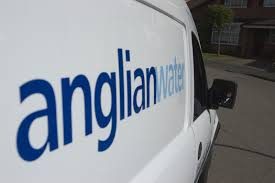 More than 400 fish died when 3km of river was polluted with sewage and trade effluent, Chelmsford Magistrates’ Court heard on Tuesday .
More than 400 fish died when 3km of river was polluted with sewage and trade effluent, Chelmsford Magistrates’ Court heard on Tuesday .
Services pleaded guilty to causing the pollution, which came from a combined sewer overflow in Thaxted, Essex. The company was fined £36,000 and ordered to pay full costs of £5,973. Mrs Claire Corfield, prosecuting for the Environment Agency, told the court the overflow ran into a stream which feeds into the River Chelmer and could have been avoided. “Anglian Water admitted that before the incident this stretch of sewer was not included on the schedule of planned preventative maintenance,” she said. A member of the public reported pollution and dead fish in the River Chelmer.
Agency staff investigated and found sewage solids and rags discharging into the stream from an outlet in Park Street, Thaxted. There was a blockage in the foul sewer at the junction of Copthall Lane, Weaverhead Lane and Tanyard, the court heard. An Anglian Water operative cleared the blockage and told Agency staff they had cleared a blockage in the same stretch of sewer a week before.
A manager from the water company told investigating officers that the blockage had been caused by a third party blockage of debris comprising a metal handle, part of a bicycle brake, an old cover, various bits of lateral and private sewers. He said that since the blockage, the combined sewage overflow had been included on the list of preventative maintenance.
Mrs Corfield told the court that a total of 421 fish had been killed including lamprey, bullhead, minnow, stickleback and stone loach. She said lamprey had a limited distribution in East Anglia and in parts of the UK their numbers were declining – 52 dead lamprey were found. Bullheads are also highly protected because of their environmental vulnerability – 50 dead bullheads were recorded. After the hearing Environment Agency officer Silvia Moros Perez said: “This site was poorly managed and this pollution and these fish deaths could have been avoided if appropriate preventative measures had been in place for this section of sewer.” Anglian Water Services Ltd pleaded guilty to:
On or about 24 June 2011, you did cause the entry into inland freshwaters, namely a tributary of the River Chelmer, of poisonous noxious or polluting matter, namely sewage and trade effluent, at Park Street, Thaxted, Essex Contrary to Regulation 12(1)(b) and regulation 38(1)(a) of the Environmental Permitting (England and Wales) Regulations 2010
Posted in News
Tagged Anglian Water, Environment Agency, Fish KIll, Pollution, Sewage
Comments Off on Anglian Water to pay almost £42,000 for polluting River Chelmer
EA report shows River flows in the normal range for September
 The Environment Agency Southeast water report for September shows the rivers responded to the heavy rainfall, but flows declined at the end of the month,the region received average rainfall for September.
The Environment Agency Southeast water report for September shows the rivers responded to the heavy rainfall, but flows declined at the end of the month,the region received average rainfall for September.
Rainfall
Although September recorded average rainfall, it was a dry month with little rainfall until the 23 rd of the month, when an area of low pressure brought a few days of persistent rain and showers to the South East. The wettest day was the 23 rd when Efford raingauge near Lymington in the New Forest recorded 68mm. On average, 80% of the rainfall for September fell between the 23 rd and 26 th of the month. The north of the Region was slightly drier than the south. Average rainfall in September rounded off an exceptional 6 month Summer period with over 150% of average rainfall. A number of catchments in the south and west of the Region had the wettest summer period on record. Examples of this are the Adur and West Sussex Chalk catchments which received 191% and 185% average summer rainfall respectively.
Soil Moisture Deficit & Recharge and Groundwater Levels
The soil moisture deficits continue to be lower than average for September as a result of the rainfall in the second half of the month. This contrasts with this time last year when the deficit was about 150% average. There has been some recharge this month, and unusually, about 240% average recharge across the Region since April. Groundwater levels are within their normal range at 5 key sites; 9 are higher than the normal range with 2 of these at exceptionally high levels for September (Jackaments in Cotswolds West – 3 rd highest and Rockley in the Berkshire Downs – 4 th highest on record for September). Levels at both Stonor in Chilterns East catchment and Little Bucket in the Stour catchment remain below normal. Chalk groundwater levels across the Region are falling, with the exception of Riddles Lane in the North Downs. Levels in the Cotswolds have responded quickly to the rainfall and have risen slightly at Jackaments.
River Flows
Although all rivers responded to the heavy rainfall on the 23 rd ; the general trend was declining flows across the Region during September with flows at key sites remaining within their normal range for September or higher. A number of sites had their highest September flows since 2008. The Coln at Bibury and the Thames at Eynsham were exceptionally high, supported by the high groundwater levels in the Cotswolds. Both these sites had the third highest September flow on record. The Itchen at Allbrook and Highbridge also had the third highest flows and is exceptionally high for September. Three flood alerts (Cole, Evenlode and Dikler) were issued in West Thames for the 24 th and one in Solent and South Downs (Cuckmere) on the 26 th of the month.
Reservoir Storage/Water Resource Zone Stocks Reservoir storage remains above average in South East England, and is higher than at the same time last year.
Full report is available Here
Posted in News
Tagged Angling Trust, Drought, Flood, Water Report
Comments Off on EA report shows River flows in the normal range for September
Thames Water ordered to pay over £13,000 for polluting the Bishopswood Stream
 Thames Water Utilities Limited (Thames Water) was fined £6000 at Basingstoke Magistrates Court for polluting the Bishopswood Stream in Tadley on or before 6 March 2011.
Thames Water Utilities Limited (Thames Water) was fined £6000 at Basingstoke Magistrates Court for polluting the Bishopswood Stream in Tadley on or before 6 March 2011.
The company was also ordered to pay the Prosecution costs of £7,293 and a victim surcharge of £15. The court heard how a blockage on a Thames Water public foul sewer caused sewage to discharge and overflow from an abandoned sewer into an inland freshwater pond and into the Bishopswood Stream. The sewage caused a dramatic deterioration in the downstream water quality and invertebrate community.
A carpet of thick smelly sewage fungus spread downstream for 250 metres. During the investigation Environment Agency officers found that a sewage discharge due to a blocked public sewer had occurred in the same location in September 2010, however due to a lower water level in the pond it had not overflowed into the stream. On that occasion Thames Water did not find the blockage and source of the pollution. The company put only temporary bungs in place and failed to investigate potential future problems.
The EU Water Framework Directive currently categorises the Bishopswood Stream as moderate status but the UK is required to improve to good status by 2027. For this reason the Bishopswood Stream is a ‘high priority’ to improve its ecological quality. Alison Love, the investigating Environment Agency officer, said: “Rivers and water courses are an important part of the environment; they offer an essential resource for wildlife, fisheries recreation and commercial activities. Thames Water jeopardised this when they failed to investigate the initial sewage spill properly. This incident caused fairly significant environmental damage which could have been prevented. “We’re pleased with the result of the court today.
The Environment Agency will continue to work within local areas and with companies to protect river wildlife. If you see a pollution incident please immediately call our pollution hotline 0800 807060 open 24 hours a day. Since the incident Thames Water has introduced 19 changes to their business processes improving the way they work and communicate internally and with the Environment Agency. The court’s outcome took into account the company have spent nearly £30,000 in remedial costs.
Posted in News
Tagged Environment Agency, Fish KIll, Pollution, Sewage, Thames Water
Comments Off on Thames Water ordered to pay over £13,000 for polluting the Bishopswood Stream


